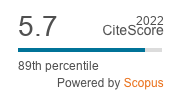The irradiance (W/m2) of light to which groups of black soldier fly adults were exposed in screen cages was manipulated by varying the distance between the cages and a 100 W, white light-emitting diode (LED) chip on a 14L:10D photoperiod. After combining the sexes at the beginning of a light period (photophase), the mating status of all individuals was noted every 10 min for two consecutive photophases. Of all matings, 92% occurred during the first photophase. Mating pairs were nearly motionless and the duration of 93% of couplings was ≥20 min, so essentially all matings were observed. Cumulative probability of mating increased from an estimated 23% at an irradiance of 0.92 W/m2 to 70% at 431 W/m2. Over the same range of irradiances, average time of mating initiation decreased from an estimated 6.4 h to 3.4 h post photophase initiation so that the percentage of matings initiated 15:00 or later decreased from 50 to 0%. Consequently, the occurrence of matings more than 7 hours after photophase initiation was associated with reduced lifetime probability of mating. Peaks in the flux spectrum of the LED at 440 (indigo/blue) and 540 nm (green) coincided with published measurements of the wavelengths at which two of the classes of photoreceptors in the retina of the black soldier fly are maximally sensitive. This study suggests that mating success of reared black soldier fly can be dramatically increased by exposing the adults to light that is particularly rich in wavelengths near 440 and/or 540 nm and has an irradiance that is an appreciable fraction of the intensity of full sunlight.
RESEARCH ARTICLE
Effects of light intensity on mating of the black soldier fly (Hermetia illucens, Diptera: Stratiomyidae)
J.C. Schneider Related information
1Department of Biochemistry, Molecular Biology, Entomology & Plant Pathology, Mississippi State University, Box 9775, 100 Old Hwy. 12, Mississippi State, MS 39762, USA.
*Corresponding author: jcs1@msstate.
*Corresponding author: jcs1@msstate.
Journal of Insects as Food and Feed: 6
(2)- Pages: 111 - 119
Published Online: August 27, 2019
Abstract
Keywords: irradiance, behaviour, insect rearing, waste management, protein production
2022 Journal Impact Factor
5.7
source: Journal Impact Factor 2023™ from Clarivate™

Institutional Offers
For institutional orders, please contact [email protected].
Purchase Options
-
G. Daş, M.M. Seyedalmoosavi, K. Schleifer, M. Mielenz and C.C. Metges
-
-
M. Barrett, S.Y. Chia, B. Fischer and J.K. Tomberlin
-
D.G.A.B. Oonincx and M.D. Finke
-
G. Bosch and K.S. Swanson
-
K.B. Barragan-Fonseca, M. Dicke and J.J.A. van Loon
-
A. van Huis
-
M. Tschirner and A. Simon
-
S. Kelemu, S. Niassy, B. Torto, K. Fiaboe, H. Affognon, H. Tonnang, N.K. Maniania and S. Ekesi
-
S. Diener, C. Zurbrügg and K. Tockner
Call for papers: Application of insect ingredients in sustainable aquaculture



